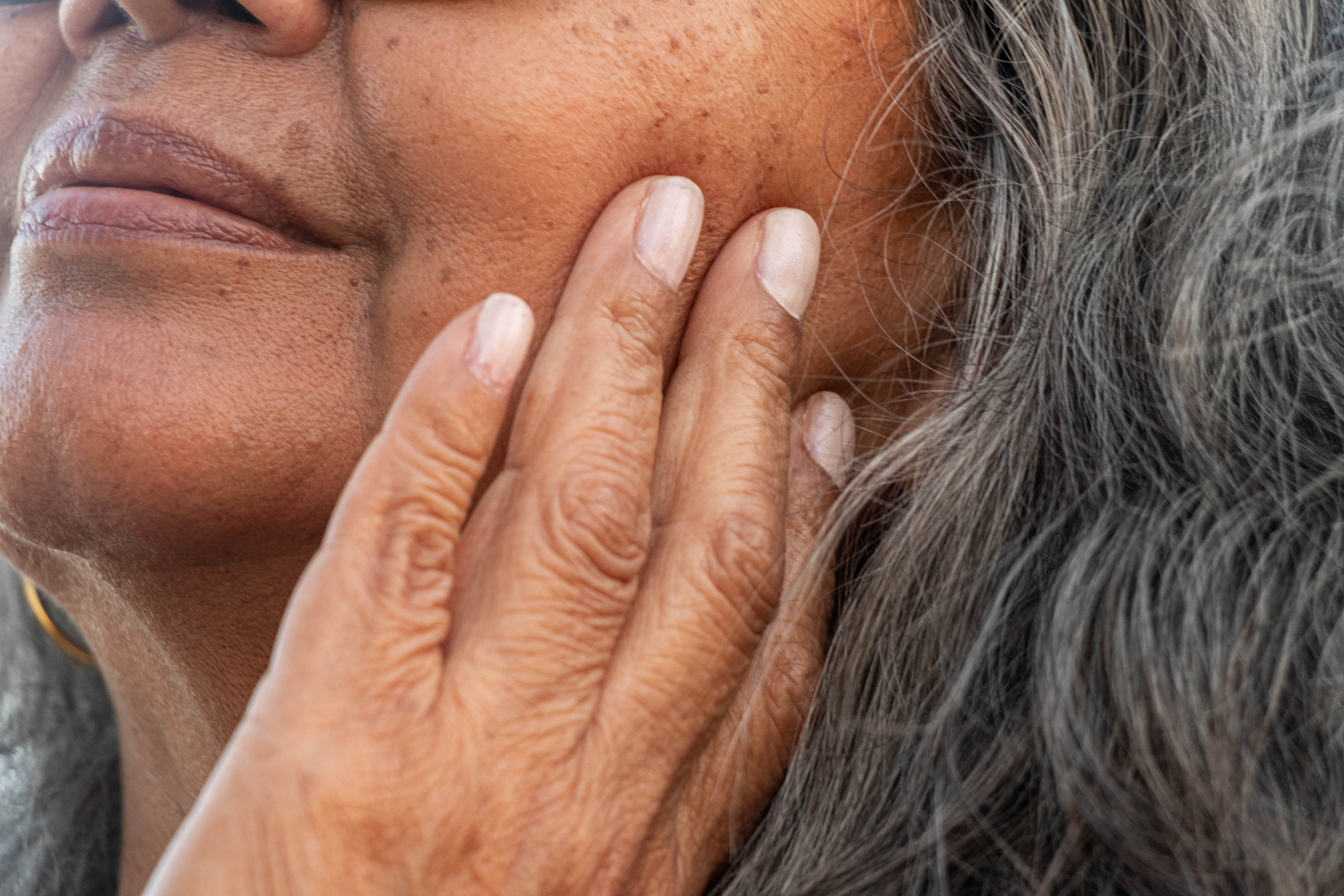
If you have fair skin and spend a lot of time in the sun — tanning at the beach, playing sports, or even gardening — you may start to notice some unwanted dark spots on your skin. Many people, especially those over age 50, report getting these flat, tan, brown, or black patches on their skin known as liver spots.
But don’t worry, liver spots, also known as age or sunspots, are not cause for alarm. Even though the condition contains the word “liver,” the dark patches do not involve the internal organ at all. Rachael Hartman, MD, a dermatologist at Summit Health, helps us understand what causes liver spots, the best way to treat them, and offers tips to avoid the skin condition in the future.
What are liver spots?
The medical term for liver spots, also known as age spots, is lentigines or solar lentigos. These harmless flat areas of darkened skin result from exposure to ultraviolet radiation (UV) from the sun, tanning beds, or the gel manicure process. Unlike freckles, liver spots do not fade in the wintertime when there is less sun exposure.
“Lentigines, more commonly referred to as liver or age spots, are most common on sun-exposed areas of the body such as the face, neck, chest, and the backs of the hands,” explains Dr. Hartman.
Causes of liver spots
Liver spots result from chronic sun exposure over the course of a person's lifetime. UV radiation stimulates cells that produce pigment, called melanocytes. Over time this accumulation of melanin causes dark spots to form on the skin.
Certain people are more likely to develop liver spots, including:
- Older adults
- People with fair skin
- Those who are exposed to UV rays from the sun or tanning beds, or gel manicures
Are liver spots dangerous?
“The good news is that even though liver spots may be cosmetically undesirable to some people, they are harmless,” says Dr. Hartman. Still, she says, it is important to get a head-to-toe skin check with a dermatologist to distinguish age spots from other possible skin disorders like cancer.
How do you get rid of liver spots?
Age spots don’t have to be treated because they are harmless. However, you can have them removed for cosmetic reasons if you do not like the way they look. This is usually considered an elective procedure and is not covered by insurance.
There are several methods that can be used to get rid of unwanted liver spots, including:
- Topical creams. This treatment, which is used to lighten dark liver spots, can be purchased over the counter. Stronger creams are also available by prescription. Common ingredients in topical creams include hydroquinone, cysteamine, azelaic acid, kojic acid, and vitamin C.
- Cryotherapy. Liquid nitrogen is used to freeze and destroy the liver spot.
- Chemical peels. This method relies on acid to peel off the top layer of the skin where the pigment usually resides.
- Lasers. Targeted beams of light are used to destroy the brown pigment in the skin. An Alex laser is ideal for removing a few individual spots. For larger areas, a Fraxel laser or an IPL (intended pulsed light) can treat an entire area such as the face, neck, chest, or hands.
Can liver spots be prevented?
“Since lentigos (liver spots) result from sun exposure, they can be prevented with diligent sun protection and avoidance,” explains Dr. Hartman. “Apply a broad-spectrum sunscreen with at least SPF 30 and reapply frequently. Wearing hats, sunglasses, and sun protective clothing is recommended when you go outside, even on cloudy days.”
Liver spots also tend to recur if patients are not diligent about sun protection and avoidance.
Summit Health can help.
Since liver spots can mimic other skin conditions including cancer, we recommend scheduling regular screenings with a Summit Health dermatologist. Our team can help identify if you have liver spots and discuss your options for removal.
